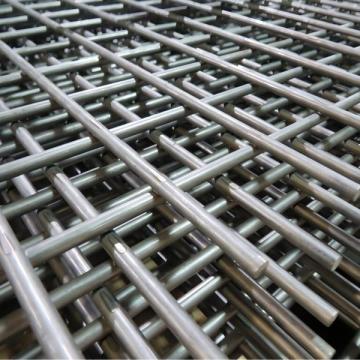
Composition and Purpose
Hardware cloth, or galvanized welded wire mesh, is versatile with a zinc coating designed to withstand corrosion. It is primarily used for applications requiring durability and resistance to the elements. Hardware cloth is a go-to choice for garden fencing, creating critter-proof enclosures like a chicken coop, and various other outdoor projects around the home or construction site. Though it is often used as material for a chicken coop, it still differs from chicken wire.
Welded wire mesh is a prefabricated grid composed of parallel longitudinal wires joined with accurate spacing to cross wires. A larger selection of specifications are available in a variety of metals. This construction allows for coarser material that incorporates larger openings and thicker wire diameters, an attribute that isn’t available with Hardware Cloth. It is used in applications where the emphasis is on uniformity and security. Welded wire mesh is commonly employed in constructing fences, cages, and partitions. Additionally, this material can also be used for bar grating or within infill panels along walkways and staircases, serving as an aesthetic barrier.
Construction and Joining
Hardware cloth is made by weaving or welding individual wires, creating a sturdy and resilient structure. This ensures the wires are tightly interconnected, making it difficult for pests or critters to penetrate. This material is available in both medium and coarse wire cloth varieties only.
Welded wire mesh is created through a welding process where longitudinal and cross wires are fused at specific intervals. This welding process results in a consistent grid in terms of spacing and durability. Welded wire mesh is ideal for applications where a uniform appearance is desired, heavier material is required and a uniform appearance is desired.
Customization and Sizing
Hardware cloth is commonly available in standard roll sizes ranging from 2 feet to 6 feet in width. Additionally, it can be customized to specific requirements to suit the needs of different projects.
Welded wire mesh can be manufactured in various materials and is available in many more specifications compared to hardware cloth. Depending on the manufacturer, you may find a range of standard sizes and additional customization options.
In Summary
While hardware cloth and welded wire mesh may seem similar, their unique characteristics and applications set them apart. Hardware cloth, also known as galvanized welded wire mesh, boasts corrosion resistance, making it ideal for outdoor projects like garden fencing and critter-proof enclosures such as chicken coops.
On the other hand, welded wire mesh offers versatility in material choices and specifications, allowing for uniformity and security in applications like fences, cages, and partitions. The construction methods differ as well, with hardware cloth being tightly woven or welded for durability, while welded wire mesh is fused through a welding process, ensuring consistent spacing and strength. While hardware cloth offers customization options within a limited range, welded wire mesh provides a broader spectrum of sizes and materials.
Whether you’re securing your garden or constructing a sturdy fence, understanding the disparities between these materials ensures you choose the right one for your project. So, whether you opt for the resilience of hardware cloth or the uniformity of welded wire mesh, rest assured you’re making an informed decision to meet your specific needs in welded mesh, fence, perforated metal, galvanized hardware cloth, and metal mesh applications.




